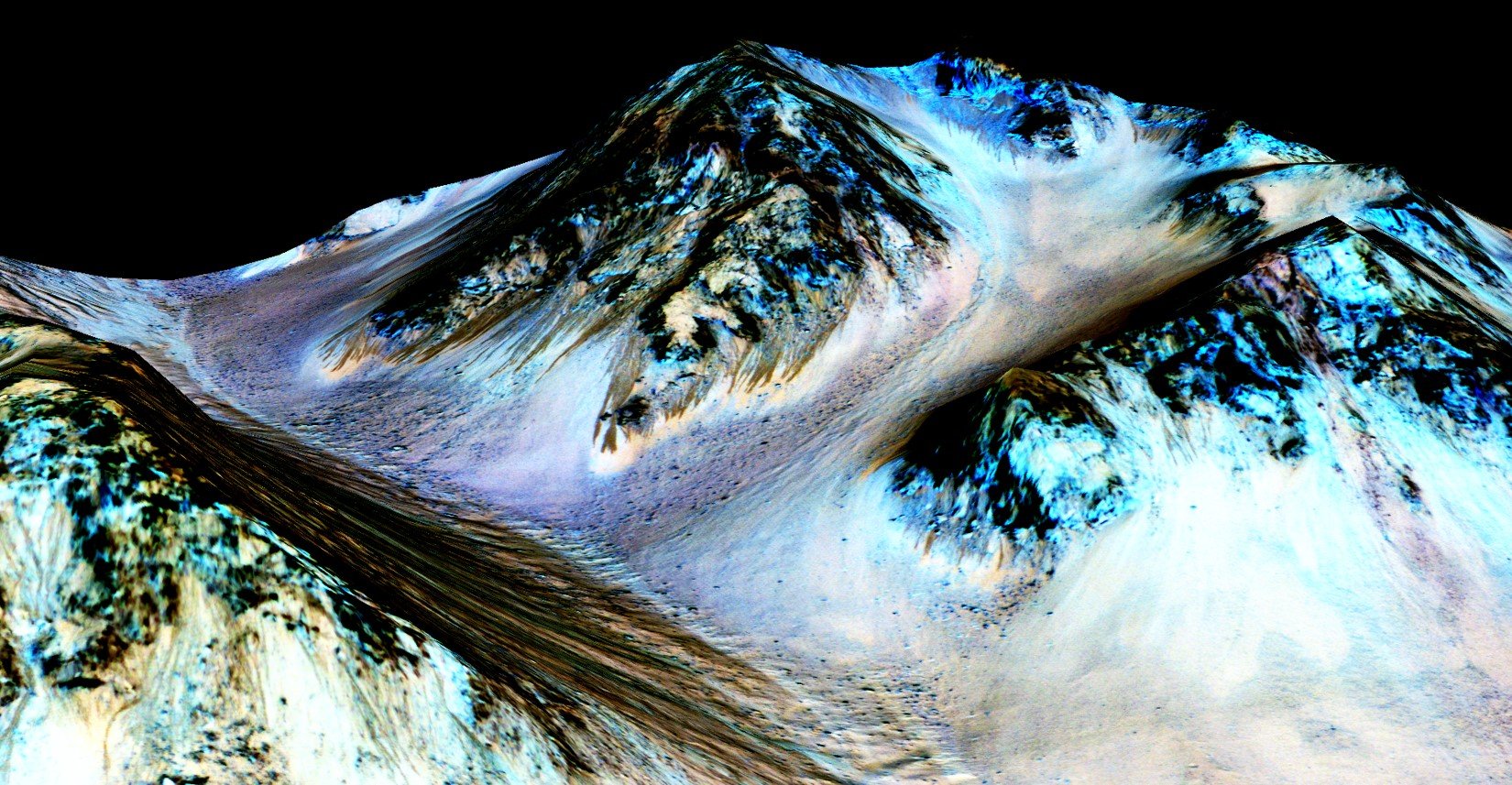Science
Seasonal Frosts on Mars May Reveal Hidden Briny Water

Research by Vincent Chevrier from the University of Arkansas presents compelling evidence that seasonal frost on Mars could lead to the formation of transient patches of briny water. This discovery raises intriguing possibilities for the existence of microbial life on the planet. The findings are detailed in a recent publication in Nature Communications Earth and Environment.
Since the Viking 1 and Viking 2 missions in 1976, which conducted the first astrobiology studies on Mars, scientists have been investigating the potential for life on the planet. Despite inconclusive results from initial soil sample analyses, the presence of geological features indicative of flowing water has reignited interest in Martian astrobiology since the 1990s. Over the years, more than 25 missions, encompassing orbiters, landers, and rovers, have been dispatched to deepen our understanding of Mars’ history and search for biosignatures.
The discovery of Recurring Slope Lineae (RSL)—seasonal dark streaks on steep slopes—has further fueled the hypothesis that liquid water may exist on Mars. RSLs appear during warmer months and fade with the onset of winter, suggesting the presence of liquid water. However, the extreme temperature fluctuations and low atmospheric pressure on Mars complicate the existence of stable surface water, making the question of RSLs controversial among scientists.
Chevrier’s research indicates that the frost typically found on Mars could mix with natural perchlorates in the soil to create seasonal brines. These brines, if they exist, could potentially support life in the form of single-celled microbes. Chevrier has spent over 20 years studying the conditions on Mars, hypothesizing that perchlorates are critical for brine formation due to their low melting points.
To investigate the formation of these brines, Chevrier analyzed meteorological data from the Viking 2 mission, which landed in the Utopia Planitia region on September 3, 1976. This area, known for its permafrost, is believed to have once been submerged under a vast ocean. Chevrier combined this data with information from the Mars Climate Database and advanced computer modeling to assess the potential for brines to form from melting frost.
His findings suggest that there is a brief window, approximately one Martian month (or about two Earth months), between late winter and early spring when conditions could facilitate the formation of brines. Specifically, the ideal temperatures for brine creation occur between early morning and late afternoon, while conditions are either too hot or too cold at other times. Notably, calcium perchlorate, which comprises about 1% of Martian regolith, has a melting point of -75 °C (-103 °F), significantly lower than Mars’ average surface temperatures, which range from 20 °C (68 °F) during the day to -153 °C (-243 °F) at night.
Though Chevrier’s research does not provide definitive proof of brines on Mars, it suggests that the planet could support life forms adapted to extreme cold and dryness. The implications of these findings extend beyond Mars, hinting at similar processes that may occur in other frost-bearing areas across the solar system.
As the exploration of Mars continues, Chevrier’s work lays the groundwork for future missions that may uncover more about the planet’s capacity to harbor life, furthering our understanding of astrobiology in the cosmos.
-

 Lifestyle5 months ago
Lifestyle5 months agoLibraries Challenge Rising E-Book Costs Amid Growing Demand
-

 Sports5 months ago
Sports5 months agoTyreek Hill Responds to Tua Tagovailoa’s Comments on Team Dynamics
-

 Sports5 months ago
Sports5 months agoLiverpool Secures Agreement to Sign Young Striker Will Wright
-

 Lifestyle5 months ago
Lifestyle5 months agoSave Your Split Tomatoes: Expert Tips for Gardeners
-

 Lifestyle5 months ago
Lifestyle5 months agoPrincess Beatrice’s Daughter Athena Joins Siblings at London Parade
-

 Science4 months ago
Science4 months agoSan Francisco Hosts Unique Contest to Identify “Performative Males”
-

 World5 months ago
World5 months agoWinter Storms Lash New South Wales with Snow, Flood Risks
-

 Science5 months ago
Science5 months agoTrump Administration Moves to Repeal Key Climate Regulation
-

 Business5 months ago
Business5 months agoSoFi Technologies Shares Slip 2% Following Insider Stock Sale
-

 Science5 months ago
Science5 months agoNew Tool Reveals Link Between Horse Coat Condition and Parasites
-

 Sports5 months ago
Sports5 months agoElon Musk Sculpture Travels From Utah to Yosemite National Park
-

 Science5 months ago
Science5 months agoNew Study Confirms Humans Transported Stonehenge Bluestones









